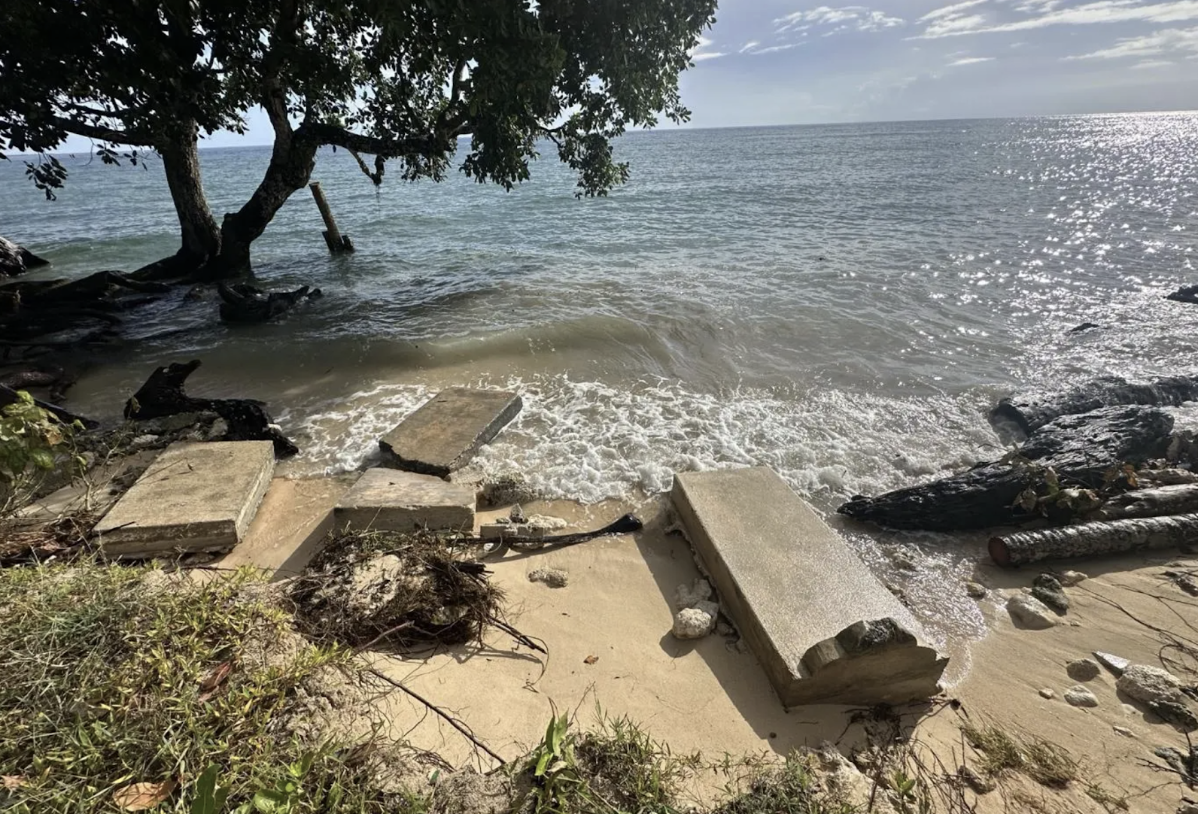
by Ednal Palmer
In Apia, Samoa
Across the Solomon Islands, climate change is no longer a distant threat — it’s an everyday reality. For many coastal communities, the ocean has become an unstoppable force, erasing not just land but entire ways of life. Yet, amid the devastation, one crucial term remains largely unfamiliar: Loss and Damage.
This concept — now central to global climate discussions — speaks directly to what Solomon Islanders are experiencing.
In-Depth Solomons earlier reported the plight faced by the Langalanga people of Lelisiana community, Malaita Province, Solomon Islands, and the loss of their sacred burial sites to encroaching sea rise as a result of climate change.
The community faces a grim and heartbreaking reality of forever losing their loved ones to the ocean.
It isn’t just environmental loss, but a personal, cultural, and spiritual loss and damage.
Walande community on the other hand, in the Southern part of Malaita Province was also wiped off, and people were relocated to the mainland.
So what is Loss and Damage?
Loss and damage refer to the negative effects of climate change that occur despite mitigation and adaptation efforts.
While mitigation addresses the causes of climate change (like reducing greenhouse gas emissions) and adaptation addresses its impacts (like building sea walls to prevent flooding), loss and damage is concerned with the unavoidable and irreversible impacts of the climate crisis.
Climate change impacts and risks are becoming more complex and difficult to manage.
Scientific evidence suggests that loss and damage is unequally distributed and not comprehensively addressed by current adaptation and mitigation, particularly in vulnerable developing countries.
Multiple climate hazards will occur simultaneously and interact, resulting in compounding risks across sectors and regions.
Many coastal communities in the Solomon Islands have already experienced losses in biodiversity, ecosystems, property, cultural heritage, and livelihoods.
In some cases, there will be limits to what communities can do to adapt, with many subject to displacement, migration, and relocation.

A 2023 analysis found that, between 2000 and 2019, the world suffered at least $2.8 trillion in loss and damage from climate change – costing around $16 million per hour.
The concept often falls into two categories:
- Economic loss and damage refers to negative impacts where the costs are quantifiable, such as damage to infrastructure or reduced crop yields.
- Non-economic loss and damage refers to negative impacts that are not easily traded in markets, and typically harder to measure in monetary terms, such as loss of culture, ecosystem services, and displacement. These tends to be more irreparable and irreversible.
Loss and damage is closely related to the concept of ‘just transition’ and equity because the world’s most climate-vulnerable countries are often the lowest emitters of greenhouse gases.
This raises the question of who exactly should pay for loss and damage in poorer countries where resources are limited.
The term ‘loss and damage’ was formally recognised in 2013 at the 19th Conference of the Parties (COP19) in Warsaw, where the Warsaw International Mechanism for Loss and Damage was established. Since then, interest has grown and an increasing number of countries are discussing loss and damage in their Nationally Determined Contributions.
Loss & Damage Funding Arrangements
At COP28 in 2023 countries agreed to operationlize the Loss and Damage Fund, which will provide financial assistance to climate-vulnerable countries. The World Bank was invited to host the Fund secretariat and to operationalize the Fund as a financial intermediary fund (FIF) for an interim period of 4 years.
Whilst progress in recognising and addressing loss and damage is increasingly urgent, it is widely acknowledged that such efforts should not detract from tackling the root causes of climate change and building global resilience to its impacts.
The best method for reducing loss and damage is still – and will always be – climate adaptation and mitigation.
In a bid to raise awareness and strengthen communication on the issue, a group of Pacific journalists are currently undergoing training on Loss and Damage in Apia, Samoa, hosted by the Secretariat of the Pacific Regional Environment Programme (SPREP).
Their mission: To inform and empower Pacific communities, giving voice to those who are already living the consequences of a warming planet, and ensuring the world understands that some losses cannot be undone — but they must not be ignored.
